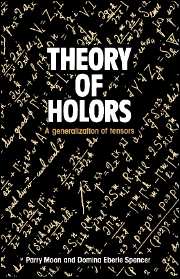4 - Tensors
Published online by Cambridge University Press: 16 October 2009
Summary
Previous chapters have developed the subject of holor algebra. We are now in a position to introduce the concept of a tensor and to enunciate the rules of tensor algebra. If we are interested in only one coordinate system, say rectangular coordinates, and never use any other, then the tensor idea is not required. But if we are concerned with some kind of geometric object that remains invariant with respect to coordinate transformation, tensors form the appropriate mathematical tool. The whole subject of vector analysis, for example, deals with a geometric object – the directed line segment or arrow – that keeps its integrity irrespective of how one changes the coordinate system. This vector is actually a univalent tensor; and vector analysis is a branch of tensor analysis.
In physics, too, we deal with quantities that are invariant with respect to coordinate transformations. Area, volume, temperature, potential, force, velocity, electric field strength, and so on, are physical entities whose existence is obviously quite independent of what coordinate system we arbitrarily select to designate points in the underlying Euclidean space. With force, for instance, the merates are different in rectangular and spherical coordinates; but the force itself is above these petty questions of choice of coordinates. Thus, the tensor concept seems to be ideally suited to physical applications. The idea of invariance is implicit in some of the older disciplines, such as vector analysis.
- Type
- Chapter
- Information
- Theory of HolorsA Generalization of Tensors, pp. 89 - 125Publisher: Cambridge University PressPrint publication year: 1986



